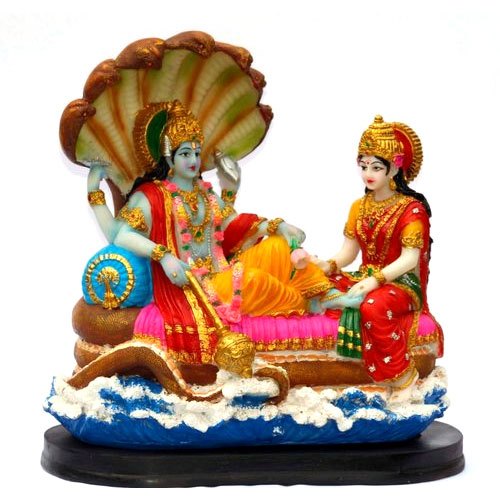
In the previous episode, we had witnessed the significance of the next important “Punya-Kshetra” after the accord on Kurukshetra. Sage Naarada now talks about the “Gaya-Kshetra”, which is extremely important for performing the “Shraadham” for all our “Pitru-Devatas”. We had witnessed the background story behind the Gaya-Kshetra, which is located in the modern-day Indian state of Bihar. We’ve witnessed that Bhagawan Brahma wanted to perform a “Yaaga” by using the Raakshasa called Gayaasura, who was residing in this particular place. However, since Gayaasura was a stumbling block for Bhagawan Brahma, Bhagawan Vishnu had to interfere. In order to ensure the continuity of the “Yaaga” and to make sure that Gayaasura doesn’t create any hurdles, Bhagawan Vishnu keeps one of His divine lotus feet over Gayaasura’s chest, thus, preventing him from getting up and wreaking havoc! This is why the “Vishnu Paadam” (Bhagawan Vishnu’s lotus feet) is very significant in this “Gaya-Kshetra”. Many families have the “Vishnu Paadam” in their “Puja-room” and they perform all the daily rituals for it meticulously. It is also a customary practice for all those people who go to the “Gaya-Kshetra”, to buy a “Vishnu Paadam” (Available in all the nearby shops around the temple, and also inside the temple premises itself) and keep it in our “Puja-Room”. Thus, such is the significance of the “Gaya-Kshetra” and in today’s episode, we shall continue this discussion further.
Moving on thus, all of us know that the most important “Karma” that we’ve to perform in this “Kshetra” is the “Shraadham”. We’ve already seen a glimpse of this in the previous episode as well, and we shall talk about it in detail. Readers should always remember this constantly – After our demise of both our parents, it is our bound duty as an ardent follower of our “Sanaatana Dharma” to perform the “Gaya-Shraadham” atleast once in our lifetime. This is very important for all of us to do, irrespective of whatever section, caste, etc. we belong to within our “Sanaatana Dharma”. There is this place called “Akshayavatam”, at some distance from the banks of River Phalguni, which flows through the place. This “Akshayavatam” is a tree, under which the “Shraadha Karma” is performed. It is believed that all the “Pitru Devatas” assemble in this particular tree and once we perform the “Shraadha Karma” here, they become extremely happy and provide their divine “Anugraha” straightaway without any question! It is a normal practice that we perform the “Pinda-Pradhaanam” to both our father and mother under this tree, with all the “Mantras” being chanted. Basically, a “Pindam” is nothing but a handful of boiled rice that is kept as a small ball, as part of the offering. More importance is given to the mother, than the father in this customary practice. In this, we first perform the normal “Tarpanam” for our “Pitru Devatas”, followed by the “Pinda-Pradhaanam”. We usually do it for three generations before ours – Our parental, grandparents and great grandparents’ generations. Thus, in general, we offer twelve “Pindams”.
While we go there, we should remember all the names of people in our grandfather and great grandfather generations, which, unfortunately today, many of us don’t! We might of course remember our grandfather generation people, but if we’ve to recollect those of our great grandfather generation, it becomes tough. Hence, it is better to do some prior research and note down all the names before we embark for the “Gaya-Shraadham”. This is the normal routine, however, we can also offer “Pinda-Pradhaanams” to a variety of others as well – For instance, we can do the offering for people who had passed away in our own “Gothram” as well as our spouse’s. Some people in our family might have passed away at a young age due to various reasons such as diseases, accidents, etc. We can offer the “Pinda-Pradhaanams” to these people as well. Moreover, we can perform the offering to our own self as well. This is the most important point here – Even if our next generation doesn’t offer, we do not need to worry. We can offer them for ourselves and finish it off.
Also, if there were pregnant women who had passed away in our family, they will also be eligible to obtain our offerings. Moreover, even animals are eligible for this. We can offer the “Pindams” for animals as well, and this is called “Bhoota-Pindam”. Normally, the total number of “Pindams” accounts to 32, which is all inclusive of the above mentioned list. Subsequent to the “Pinda-Pradhaanam” exercise, we normally offer tasty food to all the Brahmin Pandits who are present there. This exercise is called “Brahmana-Bhojanam”, and the entire “Shraadha-Karma” gets fulfilled with this practice. Hence, we should not stop with just the “Pinda-Pradhaanam” alone. We should also feed all the Brahmin Pandits there, who are referred to as “Gaya-Vaalis”. This is of course, a strenuous exercise, but we’ve to do all this once in a lifetime. Such is the importance of the Gaya-Kshetra, and this brings enormous spiritual benefits to all of us and also to our subsequent generations as well!
So for today, let us understand this point very clearly and if we’ve not performed the “Gaya-Shraadham” till now, we should immediately take steps to perform the same! We shall continue this discussion in the next episode as well! Stay tuned! 🙂
